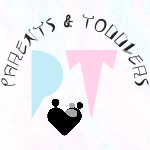The menstrual cycle is a complex, yet beautifully orchestrated, series of events that prepare a woman’s body for the possibility of pregnancy. One of its key phases is the follicular phase, during which the body goes through various changes to ensure a healthy environment for potential fertilization. In this parenting blog the importance of the follicular phase and its function in the menstrual cycle will be discussed.
The Follicular Phase: What Is It?
The follicular phase is the first of the several stages that make up the menstrual cycle. It usually starts on the first day of menstruation and lasts until ovulation, which can happen at any time during a 28-day cycle, but usually takes place around the 14th day. This phase is characterized by the growth and development of ovarian follicles, which are small sacs that contain immature eggs (oocytes).
Hormonal Changes During the Follicular Phase
To understand the follicular phase, it’s essential to grasp the hormonal changes that occur:
Follicle-Stimulating Hormone (FSH): At the start of the follicular phase, the pituitary gland releases FSH, which signals the ovaries to start maturing several follicles.
Estradiol: As the follicles develop, they release the hormone estradiol (a type of estrogen). Estradiol plays a significant role in thickening the uterine lining, making it more receptive to a potential embryo.
Luteinizing Hormone (LH): As the follicular phase progresses, a surge in LH occurs, typically around the middle of the cycle. This surge triggers ovulation, causing the mature follicle to release its egg.
Follicle Development
Multiple follicles start to develop in the ovaries during the follicular phase. While the others regress, just one follicle normally becomes dominant and continues to grow. This dominant follicle grows until it measures roughly 18 to 24 millimeters, at which point it is prepared for ovulation.
Getting Ready for Uterine Lining
Rising estradiol levels contribute to the endometrium’s (the uterine lining) thickening as the follicles mature. An environment rich in nutrients is created by this thicker lining, allowing a fertilized egg to implant and grow into a pregnancy. The body will eventually expel this lining during menstruation if fertilization does not take place.
Cervical Mucus Changes
During the follicular phase, the cervix produces fertile cervical mucus, which is thinner, clearer, and more slippery than at other times of the cycle. This mucus serves as a conduit for sperm to swim through the cervix and into the uterus. The changes in cervical mucus can help couples trying to conceive pinpoint their most fertile days.

Tracking Ovulation
Ovulation is a pivotal event in the menstrual cycle and is the culmination of the follicular phase. By understanding the signs and symptoms of ovulation, women can gain insight into their fertility and menstrual health. Some common ways to track ovulation include:
Basal Body Temperature (BBT) Charting: A woman’s basal body temperature tends to rise slightly after ovulation. Charting daily temperatures can help identify the shift.
Ovulation Predictor Kits (OPKs): These kits detect the surge in LH that precedes ovulation.
Cervical Mucus Observations: Monitoring changes in cervical mucus can indicate impending ovulation.
Mittelschmerz: Some women experience mild pelvic pain or a twinge on one side of the lower abdomen around the time of ovulation.
The Role of the Follicular Phase in Fertility
The follicular phase is a critical factor in a woman’s fertility. A healthy follicular phase is essential for successful conception. Here are a few key takeaways related to fertility:
Timing Intercourse: Knowing when you’re in the follicular phase and anticipating ovulation can help you time intercourse for the best chance of pregnancy.
Healthy Ovulation: A well-functioning follicular phase contributes to healthy and regular ovulation. Irregularities in this phase can affect fertility.
Fertility Treatments: For individuals experiencing fertility challenges, understanding the follicular phase can be crucial in determining when to seek fertility treatments or assistance.
Conclusion
The follicular phase is a vital and fascinating part of the menstrual cycle. It involves a delicate interplay of hormones, follicle development, and cervical changes, all with the ultimate goal of preparing the body for potential pregnancy. Whether you’re trying to get pregnant or are just keeping track of your cycle for health reasons, knowing your body’s natural rhythms and the phases of your menstrual cycle can help you make educated decisions about your reproductive health. The more you understand about how your body works, the better equipped you will be to deal with the challenges of your menstrual cycle.






